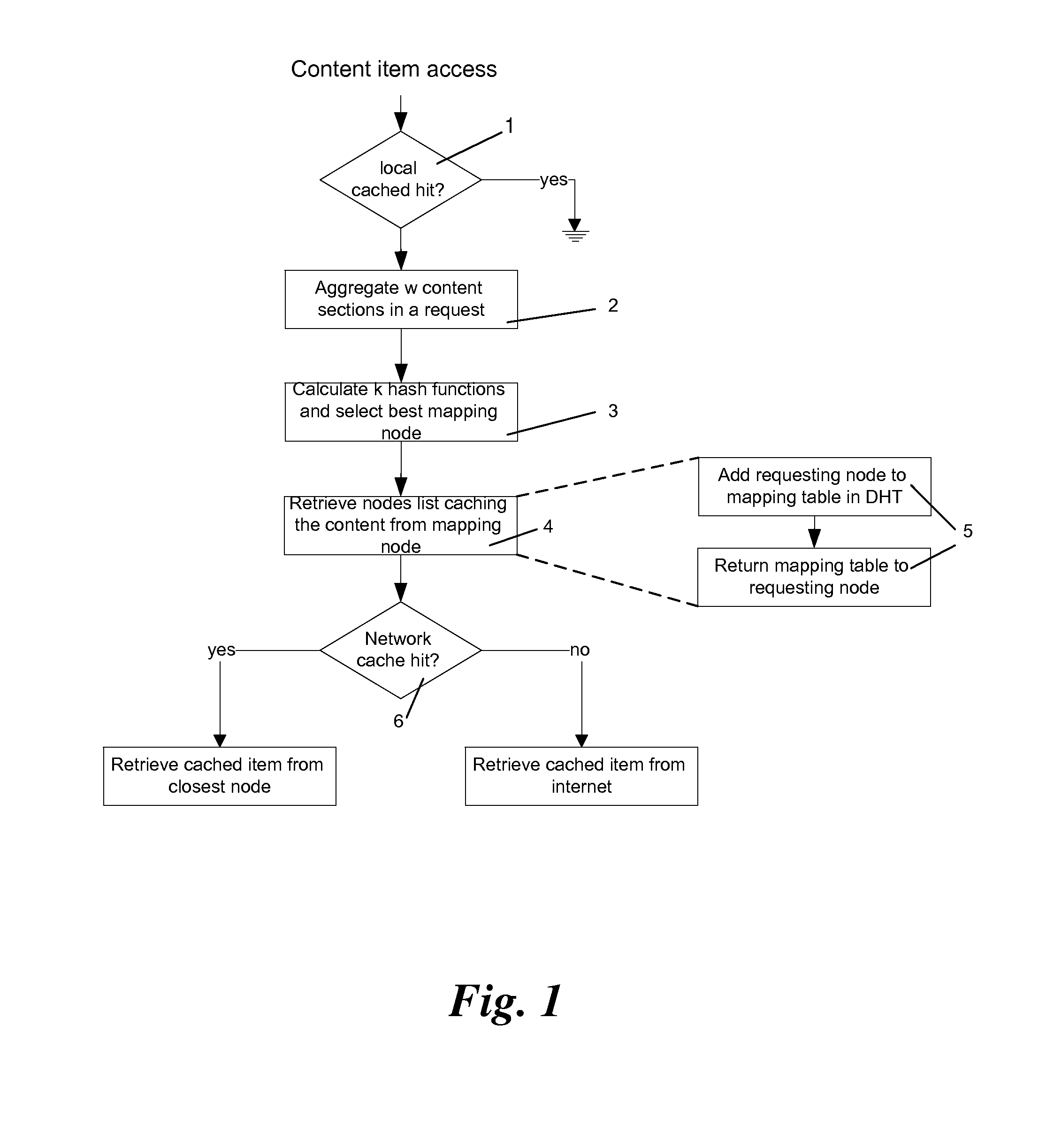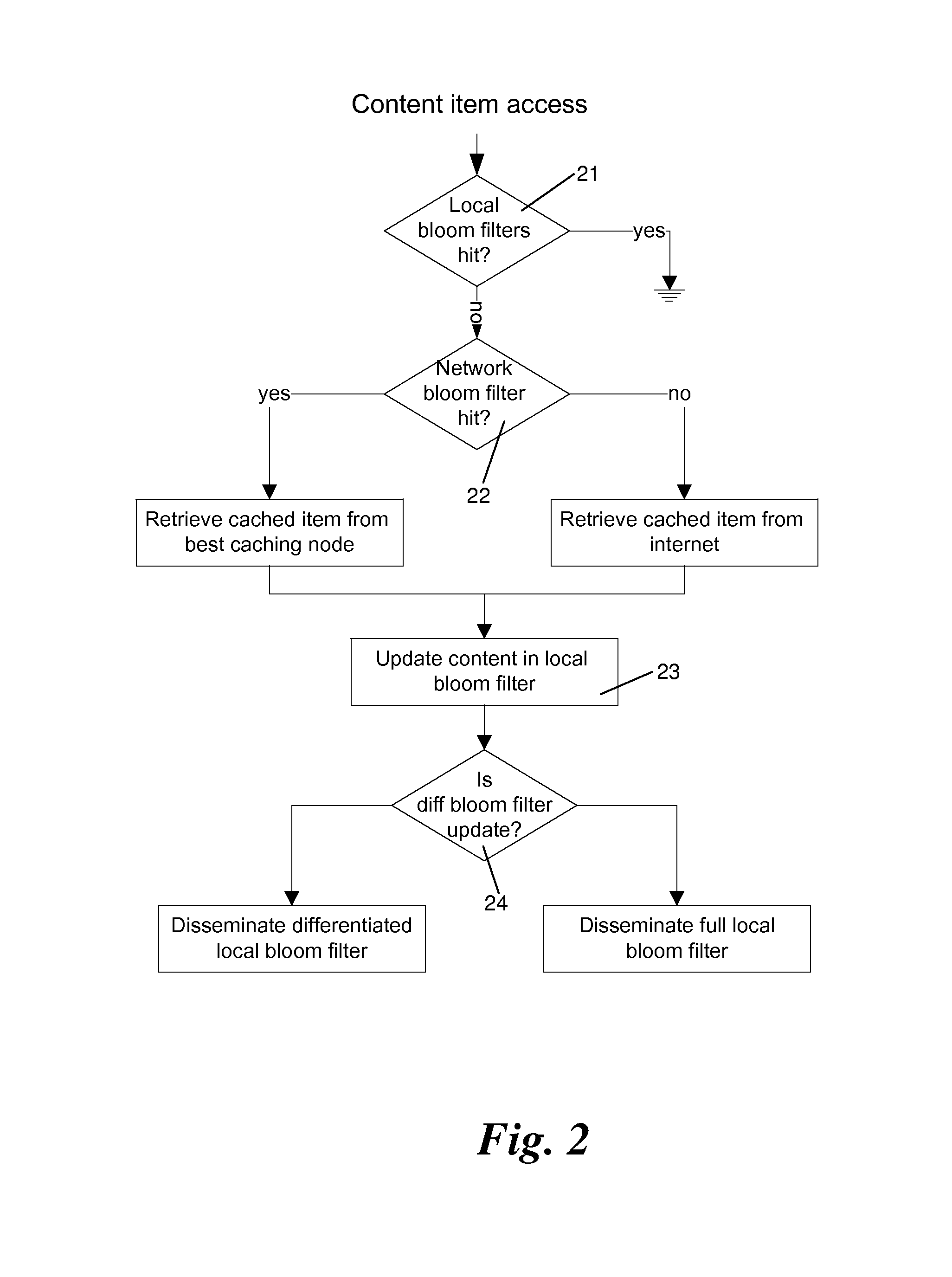Method for adaptive content discovery for distributed shared caching system
a content discovery and caching system technology, applied in the field of control and management of the highly distributed shared content caching system, can solve the problems of significant impact on the data plane content delivery efficiency, introduce key issues for the network, and add little latency to the user experience, so as to reduce the overhead of the network during the dissemination of bloom filters
- Summary
- Abstract
- Description
- Claims
- Application Information
AI Technical Summary
Benefits of technology
Problems solved by technology
Method used
Image
Examples
Embodiment Construction
[0054]The invention provides improvements for each of the known mapping dissemination approaches and further provides a dynamic mapping dissemination method selection based on provisioning and monitoring of the current content consumption characteristics within the network, such as content type, access rate, popularity, etc.
[0055]The invention addresses both the push- and pull-based mapping approaches, and provides a dynamic mapping mode selection solution.
[0056]Pull Based Mapping Approach
[0057]According to the invention an efficient Sub-DHT-based algorithm is used, given a relatively small peers size group (less than 10K) and low churn. The algorithm uses chord-based consistent hash algorithms with full membership (implying a single hop store and lookup).
[0058]Consistent hashing is used to map between content sections and peers that are responsible for them. That is, each peer is assigned a hashed ID over a cyclic range (e.g., MD5), and each stream section is also assigned such an ...
PUM
 Login to View More
Login to View More Abstract
Description
Claims
Application Information
 Login to View More
Login to View More - R&D
- Intellectual Property
- Life Sciences
- Materials
- Tech Scout
- Unparalleled Data Quality
- Higher Quality Content
- 60% Fewer Hallucinations
Browse by: Latest US Patents, China's latest patents, Technical Efficacy Thesaurus, Application Domain, Technology Topic, Popular Technical Reports.
© 2025 PatSnap. All rights reserved.Legal|Privacy policy|Modern Slavery Act Transparency Statement|Sitemap|About US| Contact US: help@patsnap.com



